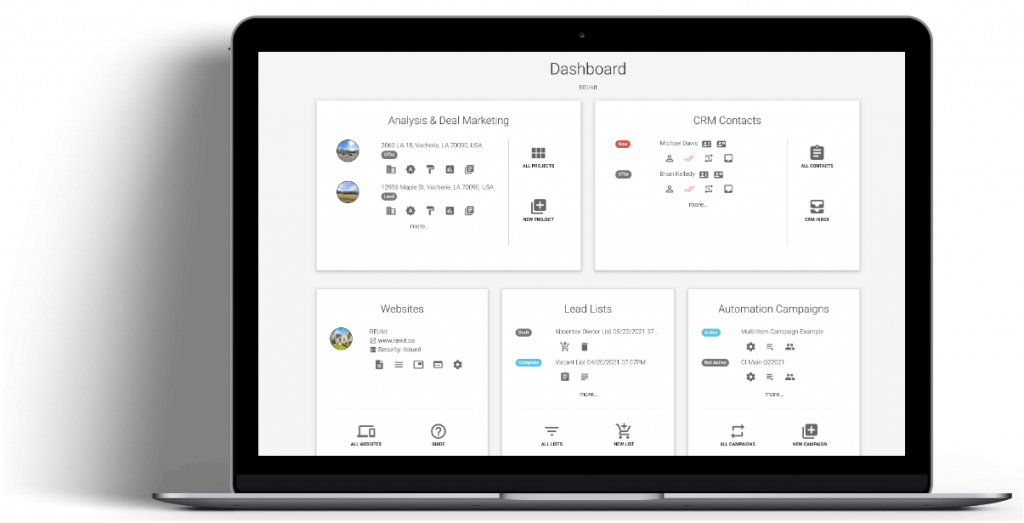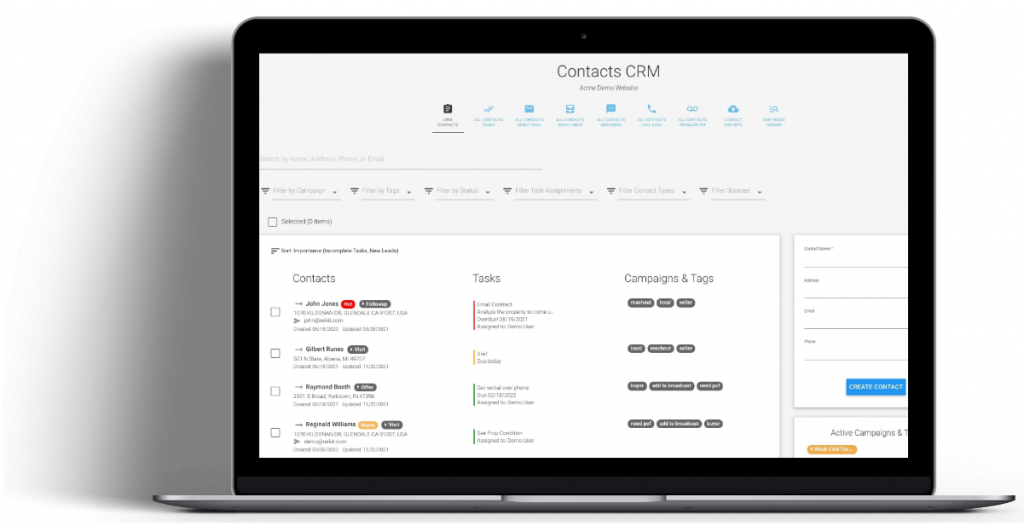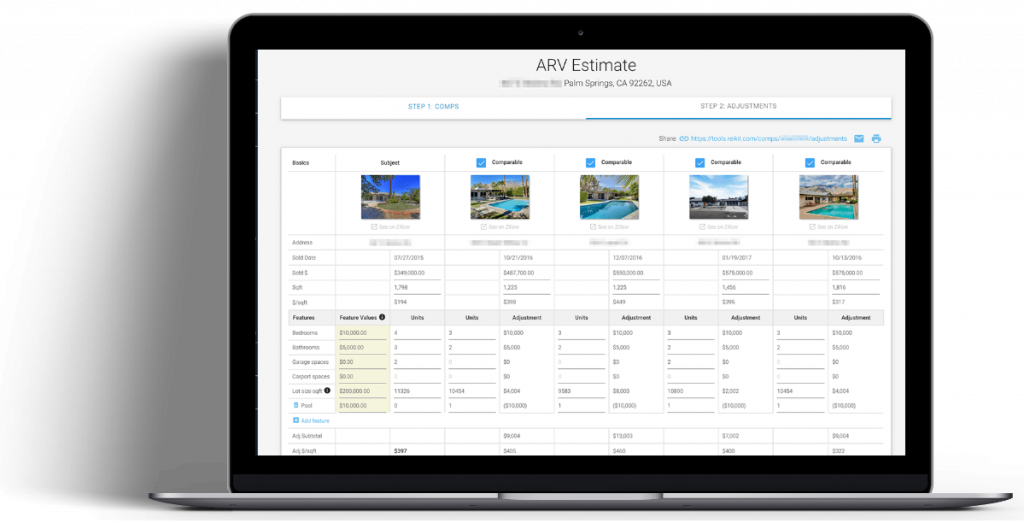
If you’re wondering how much it costs to flip a house, this post goes over the lengthy list of purchase, sale, and holding costs, combined also known as “fixed” costs, involved in a house flipping project.
This article is meant to give you an explanation and a rough idea of how much you can expect to pay for each cost. This also includes the often forgotten Transfer Tax, which can sometimes be large enough to kill a deal.
Here is the breakdown of house flipping costs:
Attorney, Closing, and Settlement Fees
Alarm Equipment and Installation
Hard Money Lender Interest and Points
So let’s get right into the costs:
Purchase Costs
Commissions: $0-3%
When you are buying a house off of the market, you may not need a realtor, nor have to pay for the services of one. If you are still using a realtor to be your boots on the ground, then you may have to compensate them for their efforts. In an on-market transaction, they would get around half the commission negotiated by the seller, or around 3%, and would normally be paid by the seller. For off-market properties, this is negotiable between you and your realtor, but I wouldn’t expect to be responsible for paying them any less than 1.5%.
Broker Fee: Around $300
If you do end up using a realtor to purchase your property, you may end up paying a broker fee. This can be negotiated down to $0 if you do any kind of volume with the broker.
Wholesale Fee: $500+
If you are buying a property in a wholesale transaction, then you will pay this fee. Property wholesalers make their money by negotiating to purchase a property and then getting it under contract (usually from a distressed seller). They then turn around and assign that contract to a buyer for a fee.
Example:
A wholesaler might contract to buy a $50,000 property and then that same day offer the property to their list of buyers for $55,000. That extra 5k is the fee.
There is no rule as to what the wholesale fee will be, and it will depend on the wholesaler, how much profit they feel they can reasonably carve out and still leave you enough profit to flip the house.
Title Search: Around $300
Running title means to trace the history of a property backwards in time to the very first record. A search will show, among other things, who sold or transferred the property, who purchased or received it, what type of sale it was, and possibly the dollar amount of the transaction.
You should always run title search on a property before purchasing. There are many situations in which a title search will find issues (termed “clouds”) on the title that you could have never foreseen. A title search can uncover anything from liens (unpaid fines that resulted in a legal judgment) on the property that could go into the tens of thousands of dollars, to uncovering the fact that the person offering the property does not actually own the property and thus has no legal authority to sell it to you.
Owner’s Title Insurance: Variable – around $800 for the first $100,000
There is always a possibility that the title search missed something. When you buy title insurance, the insurer warrants that the title search was done correctly. If a lien, encumbrance, or defect is uncovered, the insurance will protect you from the resulting damage or loss.
Lender’s Title Insurance: Around $500
If you’re using a lender, you may need this insurance. This title insurance protects the lender’s interest. You won’t need this if you pay all cash.
Inspections: $150+ each
There are two schools of thought when thinking about whether to make your offer contingent on inspections:
- Waiving inspections will make it easier to get your offer accepted
- If you don’t waive inspections, you may find the issues that could turn the deal into a money pit before you’re committed to the project
Depending on your margins, knowledge, and scope of work inspections may or may not be necessary in your situation. It’s all about mitigating your risks.
If your margins are thin, and you have little room for things going wrong, then you could order inspections to try to mitigate the risk that something unforeseen will blow your budget.
If you don’t have a lot of knowledge and experience, then you will need to mitigate your knowledge risk by hiring professionals. As time goes on and you get better at spotting problems, you’ll be able to start only involving experts when they are needed.
You should probably use an inspection contingency in your offers for the first few flips until you become an expert at knowing where to look for problems. It’s better to wait a little longer to get an offer accepted, than to miss major issues with a property that could possibly put you out of business.
Some types of inspections include, home, sewer, structural, gas, roof, pest.
Appraisal: $400-$500
This fee is often paid by the lender to have an appraiser determine the value of the home. When not using a lender, you may still want to get an appraisal done to validate your ARV and determine whether your finished product will sell for enough to make the deal worthwhile. This may be money well spent when there is a large financial risk, and can be used as another validating factor when trying to raise funds for the project.
Survey: $500
If there are any questions about boundary lines, easements and encroachments, a survey might be called for.
Attorney, Closing, and Settlement Fees: $500-$1000
These are legal fees for attorneys reviewing documents, as well as escrow fees.
Selling Costs
Commissions: $0-7% (Plan for 6%)
Most sales are on-market sales, and listing agreements typically include that you will pay a commission somewhere between 5-7%.
You could also list the house using an open listing, in which case you would only need to compensate the broker when the property is sold through the efforts of the listing broker.
If you are planning on selling your house off the market, or as a For Sale by Owner (FSBO), then you may not need to compensate a realtor.
Broker Fee: Around $300
Similarly to buying, if you do end up using a realtor to sell your property, you may end up paying a broker fee. This can be negotiated down to $0 if you do any kind of volume with the broker.
Appraisal: $400-$500
You may want to run an appraisal right before listing the property to make sure that your pricing is accurate. This is more important in a very volatile market, where the market experiences significant changes in appreciation very quickly.
Staging: $1500+
Staging helps a buyer decide how a space can be used. It’s especially important in awkward layouts where it’s hard to envision what furniture or items should go where. Staging might seem like an unneeded extra expense tacked on to the budget, but I highly recommend it.
Staging can give a refreshed, but empty, interior warmth and coziness. If that’s not enough, staging tends to have a great return on investment. Houses that are staged sell much quicker and for more which will reduce your holding costs and free up your cash for the next deal.
Professional Photography: $150+
The best way to get foot traffic, other than competitive pricing, is excellent photography that evokes a strong emotional response. Do not skimp on this if you stage a property.
Buyer Closing Costs: 2%
When you sell your rehabbed and staged flip, there’s a very good possibility that the buyer of the property will request help with their closing costs. I recommend that you put aside 2% of the ARV of the property when you create your rehab budget to account for this likelihood. You may not need it, but it’s good to plan for it as part of your deal economics.
Home Warranty: $400+
Many new homeowners insist on the seller providing a home warranty.
Termite Inspections: $50-150
In most states, the seller is responsible for a termite inspection.
Termite Tenting: $1,000-$4,000
In most states, the seller is responsible for a termite tenting.
Title Insurance: Variable around $800 for the first $100,000
Wait, didn’t I just pay for title insurance when buying the property? Who pays for the title insurance depends on local custom, as well as who wants the title insurance. It is often customary for the seller to purchase title insurance for the new home owner.
Transfer Taxes: The often forgotten purchase or sale cost…
“Documentary stamp tax,” or “realty conveyance tax,” among many others, are different names but equivalent to a real estate transfer tax. States, counties and cities impose these taxes on most transfers of real estate and those taxes vary wildly from area to area. Every state, county and city or municipality has statutes, or specific laws, that govern these types of transactions. Where you flip will determine what you pay, and it’s best to have that amount set aside. Generally you’ll pay a certain percentage of every dollar you are transferring whether it be a deed, mortgage or other type of document recording.
For example, in California you’ll pay to the county 55 cents on every 500 dollars you are transferring, and additionally a transfer fee of .11% of the amount on the recording, to perform the transfer, PLUS possibly a city tax at half of the county tax rate on the same amount.
In Massachusetts, as another example, this tax is particularly large and should be called out to make sure your deal still works.
Who pays?
The specific party who will have to pay the tax, either the grantor (seller) or the grantee (buyer), is often noted right in the statutes, but sometimes dictated by local custom. In a strong seller’s markets with multiple-offer situations the buyer might agree to pay. When you get down into the city or municipality level the transfer tax is sometimes split between the seller and the buyer.
Finally, some type of transfers are exempt from the taxes altogether, so make sure you know what your state, county and local statutes spell out when it comes to transfer taxes.
Holding Costs
What are holding costs when flipping a house?
Holding costs are those expenses that occur between the time you purchase the property and the time you sell it.
It’s important to understand what your holding costs might be, not only for your target project holding period, but also what they might grow to in a worst case scenario if your rehab grounds to a halt due to building permit issues, for example.
With some utilities, including alarm installation, or the HOA transfer there is often a one-time setup cost involved that should not be forgotten.
Alarm Equipment + Installation: $250-450
An alarm is a must, especially in areas where copper theft is foreseeable. It should be installed immediately after acquiring the property. Be sure to have someone available who can be contacted quickly should there be a trip.
I (and many others) highly recommend the FrontPoint alarm system because it’s not hardwired. This way you are able to keep the equipment and move it to the next flip location. I am a proud affiliate because I am extremely happy with their service.
Though I haven’t used it, SimpliSafe is another peel and stick system with very competitive alarm system pricing as you can see on Amazon.
Depending on how many doors and windows are involved, you’re looking at about $250 to $450 for the equipment. Don’t forget to include paying your staff to do the easy peel-and-stick install. You might also need to purchase a permit from the local alarm permit office.
Alarm System Maintenance Contract: $15-$50/mo.
FrontPoint basic monitoring starts at $35/mo and is transferable to the eventual buyer — or keep the system and transfer it to another flip.
If you do decide to go the SimpliSafe route, a basic monthly fee can be as little as $15 dollars a month.
If you are planning on monitoring with video cameras, you should expect to pay on the high end of the monitoring price.
HOA Fees: $100+/mo.
If you are researching a potential condo or a home in a subdivision with a Homeowner’s Association, it’s likely to have HOA fees. If you’re not sure if there is an HOA, a search on Zillow.com for other listings in the complex will often note in the Features section whether there is an HOA involved. Many times, the Facts section will state exactly how much it is per month. If you can’t find a fee, double-check with that building’s Homeowners Association if one exists.
HOA Transfer Fee: $100-$400 One time
There may also be an additional fee, called a Transfer Fee, of the HOA dues from the old owner to a new owner. This fee may be paid by the seller, but as a cash buyer you might have to foot this expense.
Insurance: $100-300/mo.
You will want top-notch Builder’s Risk coverage that includes hazards prevalent to your area as well as theft, vandalism, and mischief. If your contractor has his tools stolen, or your staging furniture disappears overnight, you won’t pay out of pocket for that loss (depending on your deductible.)
You will also want liability insurance during your flip.
If the house does not sell as quickly as expected, be sure to get vacant house insurance to cover the building while the property is empty in cases of copper/AC theft or arson.
I, and pretty much every other investor I know, use REIGuard to insure us during a flip.
Utilities: $200-500/month
Your remodeling contractors will need electricity, running water, and in many cases, heat. This can add substantially to your holding costs, which vary by property type (multi-family, SFR, old build, new construction), city, and the temperatures in that area throughout the seasons.
Taxes: $500-$$$$$
Taxes are quite possibly one of the most overlooked holding cost expenses, and also the easiest to research. Any search in Zillow.com on the property will bring up a Taxes section that will list the tax history.
Alternatively, Zillow.com commonly shows the Assessor’s Parcel Number (APN) or the identifier unique to your area, in the listing. If available, it will display a link that will take you directly to the property data with tax history and current year’s tax assessment for that the city or country. You can also copy that identifier and look it up on the assessor’s office website directly.
Yearly taxes, as a rule of thumb evidenced by many jurisdictions, are around 1% of the property’s assessed value. So, a property with an assessed value of $600,000 will receive a tax bill of approximately $6,000. In certain parts of the country, like in the Chicagoland area for example, property taxes can be above 13%. 13%!
The good news is that you only pay for the taxes while you owned the property. The bad news is if your rehab is going to take a significant amount of time, this can add up to a losing deal.
Hard Money Lender: Interest & Points 7.5% to 18% + 1-6 points
Under normal circumstances, Hard Money will be the most expensive holding cost you have, and if you decide to use it, you should ensure that your holding time analysis is as accurate as possible. Depending on the amount of the loan and the rehab timeline, interest on hard money usually runs 7.5% to 18%/year, with 1-6 points origination. Each point represents 1% of the loan amount.
You can often find Hard Money lenders that will lend between 70-80% ARV LTV, which could include your rehab costs.
Summary
I’ve listed many of the more expensive holding costs that you will run into in a typical flip. When you add them up, you can easily end up with holding costs of $15,000/mo on a $500,000 flip. That’s $500/day, and every day that you experience construction delays will significantly eat into your profit margin.
This is why it’s imperative that your team is in place, that you can keep your contractor on time and budget, that your realtor is ready to list as soon as it’s done, and that you’re able to respond to and resolve issues that come up quickly.
With holding costs, time will be your number one enemy.
REIkit of course comes preloaded with this list of project cost items for you to track, so that you don’t forget to take them into account in your deal analysis.
Have you experienced any large holding costs not listed here?



